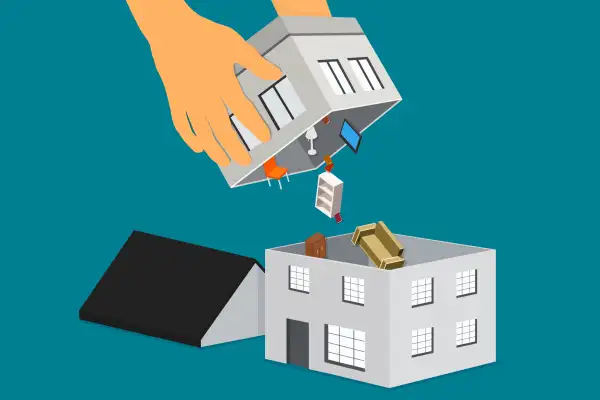Started Living in Your Second Home? You May Not Have Enough Home Insurance

If the waning days of summer have you deciding there's no need to leave your vacation home, perhaps ever, get in touch with your home insurance company. Skipping that call could lead to trouble with your coverage.
The pandemic triggered a rush in second-home buying, as families who could afford it snapped up beach cottages and mountain cabins, while many of the families who already owned second homes migrated to them, turning getaway spots into full-time dwellings.
Property insurance experts say families who have made this transition — or plan to do so soon — should check in with their carrier or broker because there are insurance implications that could potentially leave homeowners under-insured in the case of a storm, fire or other catastrophe.
The reality of risk to your home is that it’s safest when you’re home. “For your primary residence, you need to make sure you have the right protections in place because you want to make sure it isn’t considered vacant,” says Richard Lavey, president of Hanover Agency Markets at The Hanover Insurance Group.
Why it matters which home you occupy most
From an insurance perspective, the implication of a home being unoccupied means that more time can elapse — and more damage can be done — if there is a calamity.
In terms of policy types, insurance on vacant or unoccupied property is a different type of insurance from a typical homeowners insurance policy, whether that policy is for a primary or secondary residence.
Vacant property coverage typically covers the structure itself but not the contents — so if you’re temporarily living in a vacation home but plan to return to your primary home at some point (or if you’ve been going back and forth over the course of the pandemic), vacant property insurance probably is not what you want.
There are two aspects of your homeowners insurance coverage you need to be concerned about, according to Lavey: Coverage on your (now empty) primary dwelling, and coverage on the home where you’re living now.
“You’d have to almost reverse the protections you had previously,” he says.
In an ideal world, savings from insuring your country home, now that it’s more often occupied, would offset possibly higher premiums for your less occupied urban or suburban dwelling. But homeowners making a switch in residency shouldn’t necessarily expect their home insurance premiums to drop, warns Cathy Seifert, an insurance analyst at CFRA Research. That could especially be the case if you've made improvements to one or both of your residences during the pandemic.
The renovation complication
High prices for homes, and limited inventories, are prompting many restless homeowners to skip moving and instead renovate their properties. Insurance pros say that renovations triggered by the pandemic should prompt homeowners to assess their coverage levels to make sure that they are still sufficient to cover rebuilding costs in the case of a total loss.
If you made a seasonal retreat into a full-time dwelling, it’s possible that you added insulation, expanded the footprint of the home itself, upgraded windows or made other enhancements to make it more suitable for full-time life. All of these investments should be protected, which means working with an insurance pro to determine how much it would cost to rebuild or replace your home inclusive of those upgrades if disaster were to strike.
And don’t forget your furniture, electronics, appliances and other goods you either brought from your other home or bought to put into the vacation home. “If you're going to make that house your primary residence, you may want to rethink your content inventory and the limits on your policy,” Seifert says. “If you’re making it your primary residence, you probably have higher-value possessions in there.”
The rental complication
A big question that will determine how you retool your insurance coverage to reflect your current living situation is whether or not the secondary home previously had been rented out to tenants. “If it was a rental property and you’re no longer going to rent it, that’s something the insurance company should know about because that’s a different set of liability issues,” says Seifert.
“Policies will be structured differently if it’s your home and not your rental property, but also not your primary residence,” she says. “If you were renting it, chances are you had a larger liability rider. You might no longer need that kind of a rider, she says, but any savings you might realize there are likely to be canceled out if you also are increasing coverage for the vacation home dwelling itself and/or the contents.
Other protections for your previous primary home
If your primary home is going to be empty for an extended period, Lavey recommends implementing the same protective measures and equipment insurers suggest (or require) for a vacation home.
This might mean installing or upgrading protective equipment, such as security cameras, a burglar- and fire-alarm system linked to a central monitoring station, temperature sensors, a water shut-off device and a backup generator. You might be able to offset the cost of installation by getting a discount on your premium after installing this kind of equipment.
More from Money:
Best Homeowners Insurance Companies of 2021
11 Best Life Insurance Companies of September 2021
Already Stretching to Buy a Second Home? Insurance May Add to the Sticker Shock
